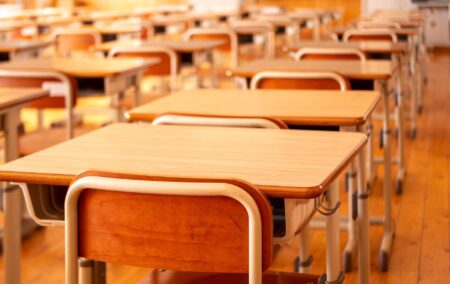Although the matric results of 2021 show that the overwhelming majority of learners have passed, the figures conceal a low pupil retention rate.
The final National Senior Certificate (NSC) examination results have been released and they reveal that 76.4% of matric candidates have passed. This is a 0.2 percentage points increase from the previous year.
Like in every other year, the government will try to frame the high pass rate as proof that South Africa’s education system works sufficiently well.
During a presentation of the 2021 results, Basic Education minister Angie Motshekga said that the class of 2021 performed well despite the challenges brought on by the Covid-19 pandemic.
She went on to say that in the last 10 years, there has been a consistent increase in the NSC pass rate, with 60% completing matric in 2009 compared to more than 70% in recent years. ‘The classes of 2020 and 2021 produced the best results of quality in the history of the NSC exams. We have more bachelors, we have more girls sitting for exams. We are very proud.’
However, when we unpack the results, we will see a different story emerge.
Pupil retention rate
A true reflection of South Africa’s educational outcomes should take into account the pupil retention rate. For example, in 2018, there were 1 033 799 learners in Grade 10.
By 2020, only 578 468 learners actually made it to Grade 12. Of those who wrote their final NSC examinations, only 440 598 passed while only half of those (210 820) passed well enough to gain Bachelor’s (university) passes.
In other words, of the original Grade 10 cohort, only 56% managed to make it to matric, only 42.6% passed their exams and a mere 20.4% achieved Bachelor’s passes.
The fact that more than 40% of Grade 10s do not enter Grade 12 should serve as a major red flag signifying that our education system is dysfunctional. According to Stats SA, significant numbers of learners experience problems at school including lack of books, inadequate facilities, teacher absenteeism, poor-quality teaching and striking teachers.
Stats SA’s Labour Force Survey also showed that more than a third (33.9%) of young people aged 15-24 years in 2020 were not in employment, education or training.
Young people leaving school prematurely will most likely have to try and find employment in sectors where unskilled or semi-skilled job opportunities are most prevalent. However, South Africa’s economy has modernised to a point where economic activity is concentrated in the tertiary sectors, which require a highly skilled workforce.
As a result, South Africa’s high school drop-out rate is one of the key causes of persistent high unemployment, and therefore, crime and violent unrests.
In order to fix the crisis at our schools, the government will have to stop sweeping the glaring problem of sky-high drop-out rates under the rug. Crucial steps need to be taken in order to keep pupils at their desks.
Vouchers
Some solutions include: financially empowering poor households with education vouchers so that parents can send their children to better-performing schools, employment by merit, lessening the destructive influence of SADTU, and ensuring greater involvement of School Governing Bodies.
Without these steps, South Africa will continue to pretend that our learners are getting good grades.
[Image: https://pixabay.com/photos/school-study-education-desk-6900381/]
If you like what you have just read, support the Daily Friend
Click here for a free 30-day trial with the CRA

